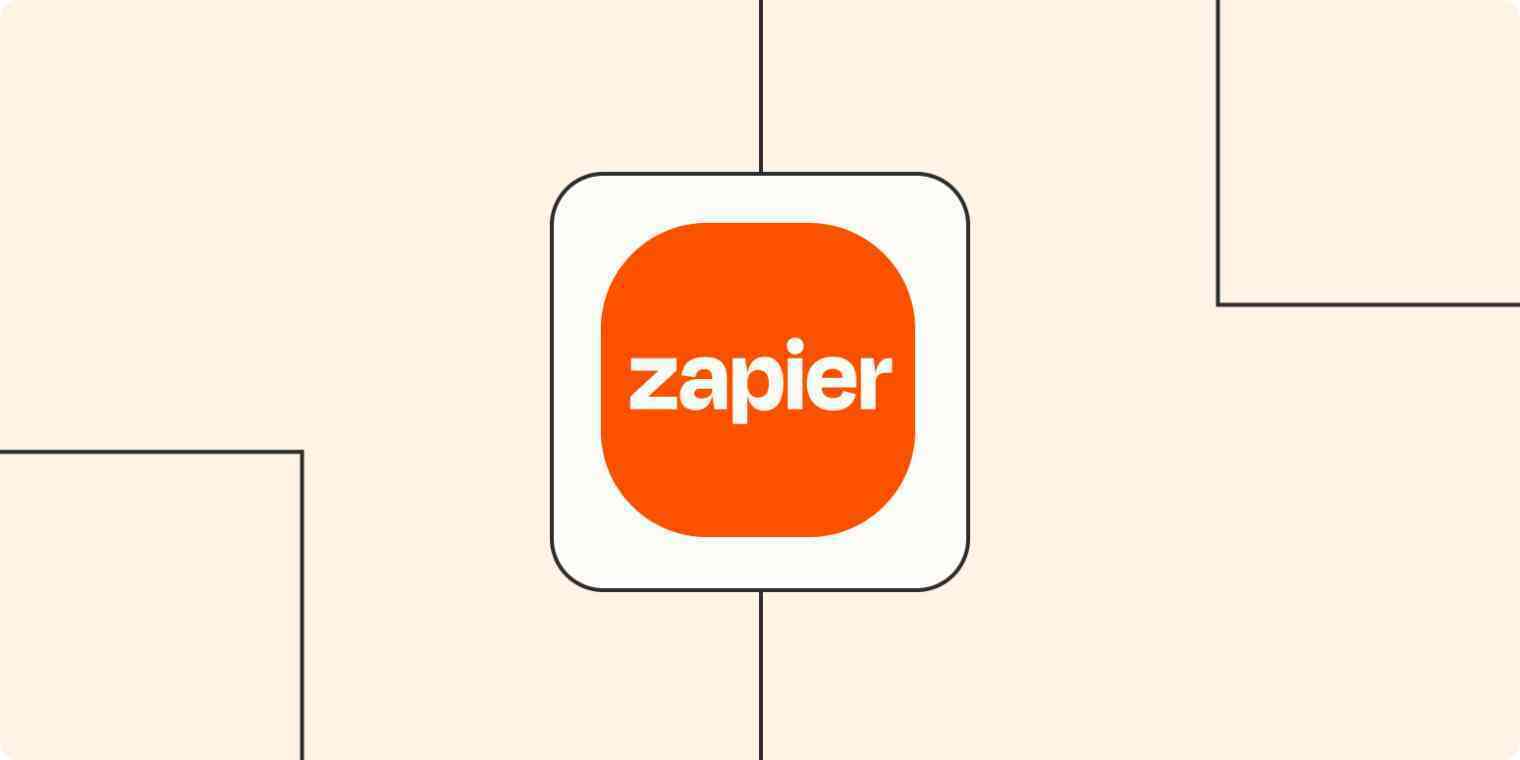Get Support
Have a question? Let's get you an answer!
Other Help Resources
Wait, there's more! Check out these Community sourced spaces for additional resources.
Learning Resources
All of our best learning resources can be found here.
Share your knowledge
Give back to the Community by sharing your automation wins and helping to answer questions.
Other Learning Resources
Some of our favorite additional ways to upskill your Zapier knowledge.
Product Updates
Check out what is new and upcoming with Zapier with our regular product updates.
Early Access Program
Want to join Early Access? Learn more here.
Zapier Tools Hub
Fun fact: there are 26+ "by Zapier" apps listed in our app directory. Here are some resources to help you learn how to effectively use them in your automations and workflows.
- Stay up to date on the latest topics
- Get automation inspiration
- Need help? Ask the community!
"By Zapier" Apps FAQs
Resources for "by Zapier" Apps

Here are a few handy resources related to the “by Zapier” apps. Hopefully this saves you the trouble of searching for it yourself.
Help docs for our built-in tools: a great place to start if you want to learn how to use our “by Zapier” apps.
Zapier Learn — Filters and Paths: Filters and Paths add conditional logic to your Zaps.
Zapier Learn — Formatter: Formatter is an all-purpose tool for your automation toolbox.
Zapier Learn — Delay and Schedule: Learn how to perfectly time your Zaps so that they run right when you want them to.
Zapier University — Zapier 101: In Section 4 of this video series, learn how to use our most popular “by Zapier” apps.
Webinar — Intro to Formatter: Replace, split, and shorten text, create default values, remove HTML tags, modify date and time values.
The Zapier Formatter Guide: How to automatically format text the way you want.
Community articles about some of our most popular "by Zapier" apps:
 Formatter by Zapier (51+ articles)
Formatter by Zapier (51+ articles) Code by Zapier (39+ articles)
Code by Zapier (39+ articles) Webhooks by Zapier (28+ articles)
Webhooks by Zapier (28+ articles) Filter by Zapier (11+ articles)
Filter by Zapier (11+ articles) Paths by Zapier (10+ articles)
Paths by Zapier (10+ articles) Schedule by Zapier (9+ articles)
Schedule by Zapier (9+ articles) Delay by Zapier (9+ articles)
Delay by Zapier (9+ articles) RSS by Zapier: (8+ articles)
RSS by Zapier: (8+ articles) Digest by Zapier (8+ articles)
Digest by Zapier (8+ articles) Looping by Zapier (7+ articles)
Looping by Zapier (7+ articles) SMS by Zapier (5+ articles).
SMS by Zapier (5+ articles). Email by Zapier (3+ articles)
Email by Zapier (3+ articles)
How to use multiple triggers for the same Zap (Sub-Zaps)
Have you ever found yourself making the same steps over and over in different Zaps? It’s honestly not a great use of time, but until recently it was the only way to get things done. But now with Sub-Zaps, you can build those steps once, then re-use them in any Zap! That way, you can spend more time on the interesting things in life, like learning how to cook a perfect medium-rare steak, or building a treehouse for your cats.A Sub-Zap is basically a normal Zap, but instead of having a normal trigger, it’s triggered by a different Zap, then returns information back to that Zap in its last step. You can think of it almost as a custom Action step that you build yourself, and can use in any Zap you like.When you’re making a Zap and want to add in a Sub-Zap, you’ll add an action as normal, but choose the “Sub-Zap by Zapier” app:(view larger)This will let you choose the “Call a Sub-Zap” action, and pick which Sub-Zap you want to use in this Zap. If you’re following this guide, you haven’t made one yet, so you’ll click the link to Create a Sub-Zap.This will create a brand new Zap for you with the special “Start a Sub-Zap” trigger and “Return From a Sub-Zap” action. These are the basic building blocks for your Sub-Zap - any actions between these two will take place every time the Sub-Zap runs.In my example, I’m using a dedicated Sub-Zap to capitalize all the letters in a single input. Let’s set up the trigger for that. You’ll want to put at least one Input / Argument into the list, since this is how we’ll send information over and return it later:(view larger)Next, we’ll want to add one or more actions after the trigger, but before the “Return from a Sub-Zap” step. In this case, I’m going to add a formatter that turns everything into Uppercase. Use one or more of the inputs from the trigger - if you need real sample data, go ahead and go back to your original Zap and test the “Call a Sub-Zap” action with real data. But otherwise, you can just use the generic sample date.Here’s what my Formatter looks like with real data:(view larger)Once you’ve added all the actions you want to, go to the “Return from a Sub-Zap” action. This is where we set up the output of this Sub-Zap based on what happened in the previous steps. Mine is returning the output of the formatter as “Capitalized,” which you can see below:(view larger)Test this step and turn the Zap on, and now you’ve got yourself a functioning Sub-Zap! You can test the “Call a Sub-Zap” action again in the original Zap to get some real sample output from this, and use it in the other Zap:(view larger)And that’s all there is to it! It’s simple to set up, but it’s also extremely flexible. In this case, I’m calling the Sub-Zap from multiple forms and capitalizing a response, but you can put any action into a Sub-Zap. Another consequence of using Sub-Zaps is that it becomes much easier to make changes down the road. If you use the same Sub-Zap in 20 Zaps, then making a change means you only have to change 1 Zap and all 20 Zaps will operate differently. It could save you a lot of time! A Brief Video Showing the ProcessOne of my colleagues also put together a short (1 minute) video showing a similar usage of Sub-Zaps, if you’d like to take a look: CLICK FOR THE VIDEO → https://cdn.zappy.app/4bc43482ecd1e8e8cd804344974c4efb.mp4 I hope this saves you time and gives you a chance to build even cooler Zaps!
From the Zapier Blog
Convert Markdown to HTML
Learn how to do this with the Zapier Formatter app.
Slack Messages from Webhooks
Use webhooks to trigger a Zap that sends a Slack message.
Compare & Calculate Dates
How to compare and calculate two dates in a Zap.
Build your own journaling app
See how Zapier apps can help you do this.
From Zapier Learn

Formatter by Zapier: A Course
In this course you'll learn how to use Formatter to:
- Modify text
- Extract data
- Find and replace text
- Format dates and times
- Perform math formulas
- Create lookup tables

Filters and Paths: A Course
This course teaches you how to add conditional logic to your Zaps.
- Want to get a text when someone fills out your form, but only if that person is a qualified lead?
- What to follow up with customers differently depending upon which product they bought?
Filters and Paths make that possible.
By the end of this course you'll be familiarized with these essential Zapier tools.
Enter your E-mail address. We'll send you an e-mail with instructions to reset your password.
Scanning file for viruses.
Sorry, we're still checking this file's contents to make sure it's safe to download. Please try again in a few minutes.
OKThis file cannot be downloaded
Sorry, our virus scanner detected that this file isn't safe to download.
OK